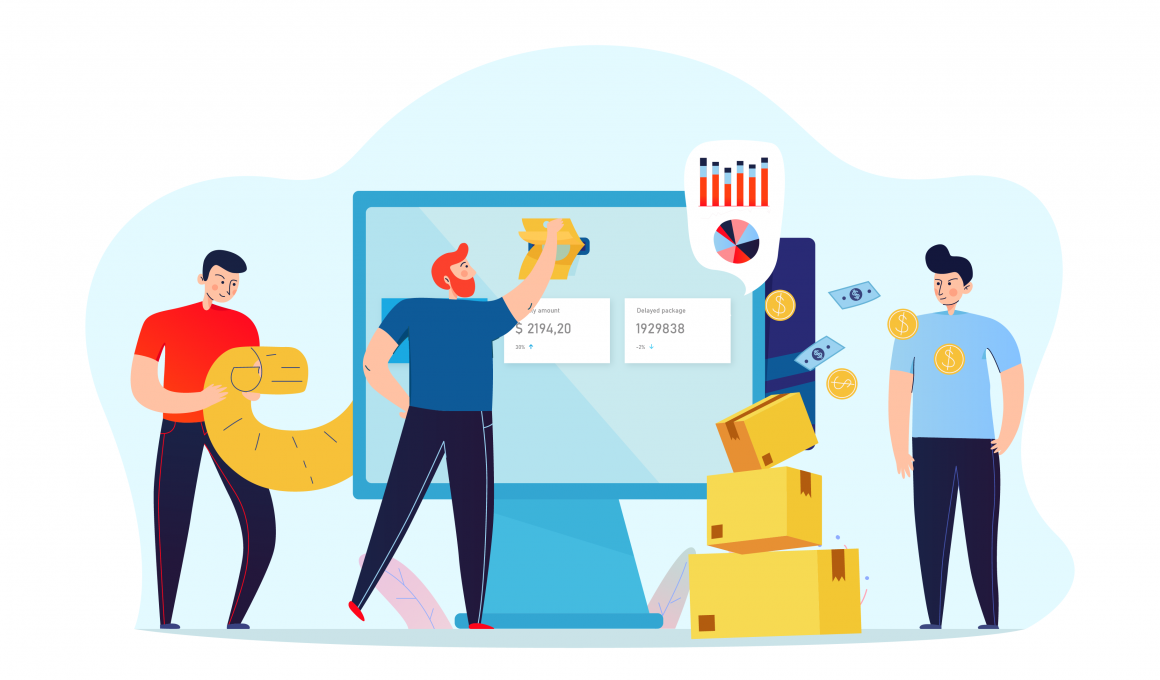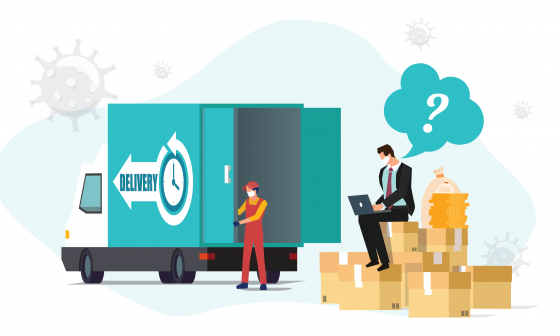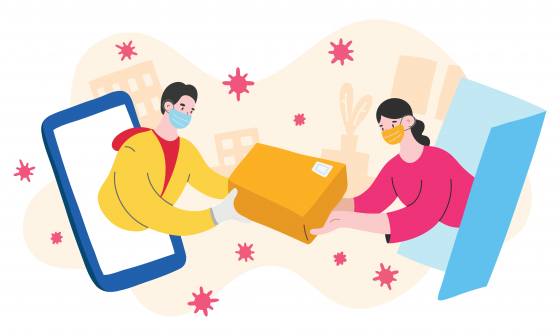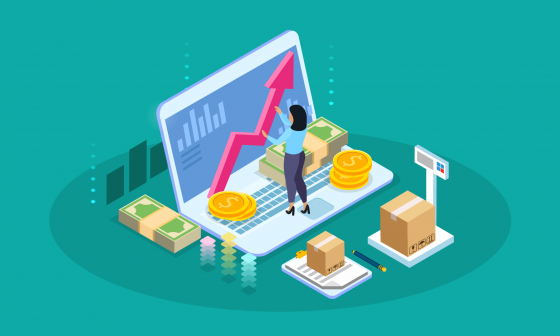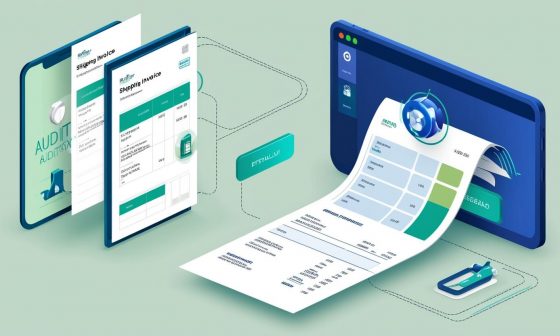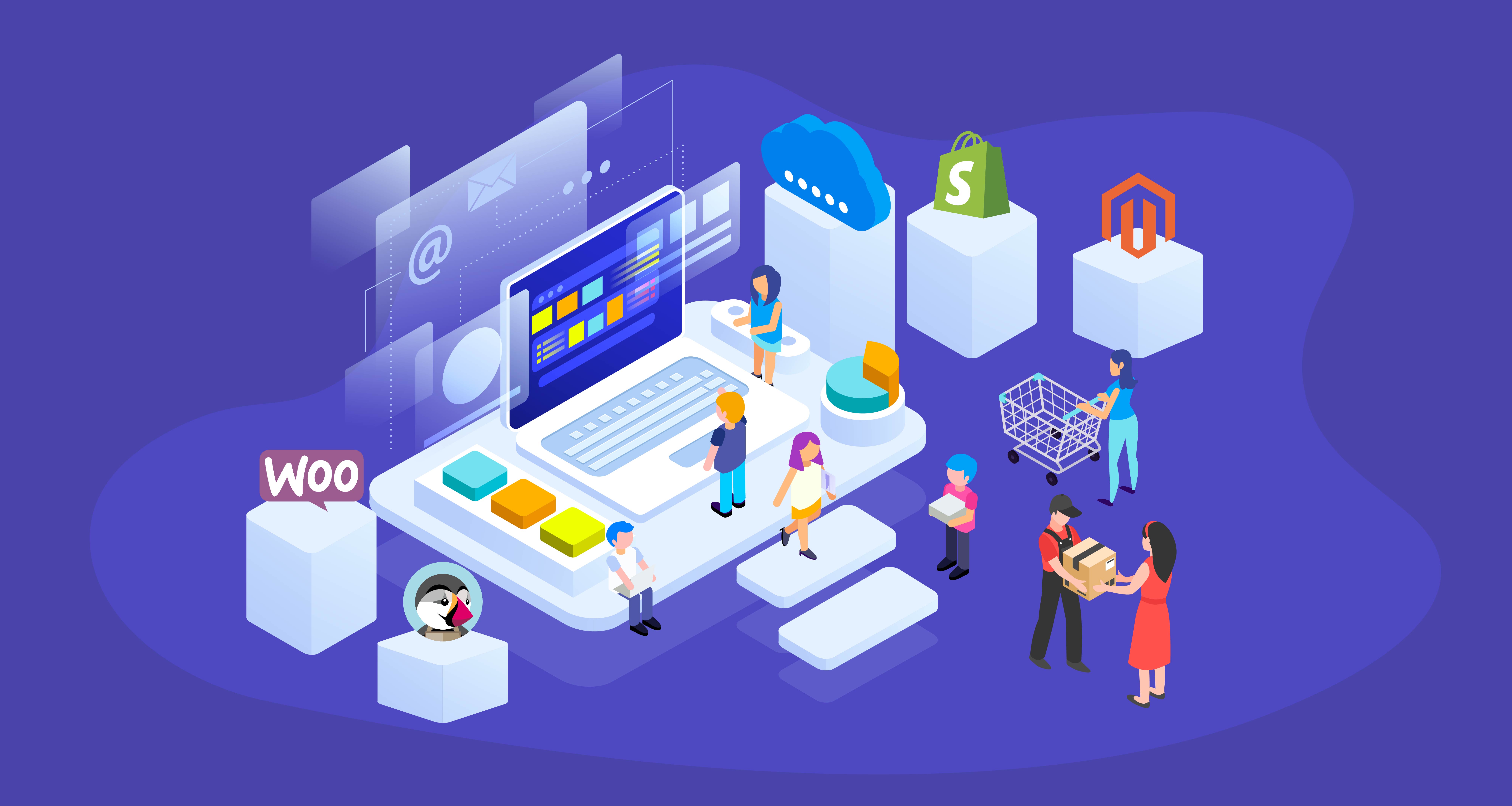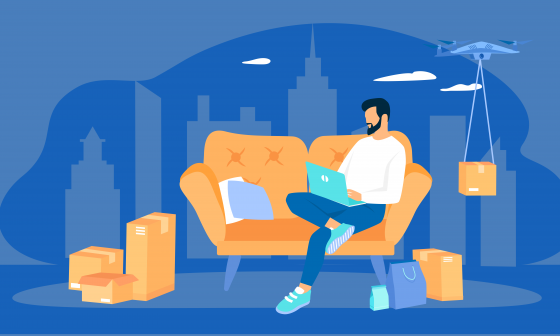The actual costs of late package deliveries inflict both financial and non-financial losses. Even delivery giants such s FedEx, UPS, and DHL fail to deliver packages on time. FedEx delays or UPS delays are quite common. In the e-commerce industry, if the items arrive late, customers may not purchase from the same retailer ever again. It means loss of business.
Although replacing products to make amends for the delayed delivery may seem like a simple solution, however, it is not a smart strategy financially. It is because winning a new customer can be more expensive (5 to 25 times more) compared to retaining an existing one. Moreover, businesses suffer a huge financial loss when premium services such as express or air default on their promise.
Common Reasons for Late or Missed Deliveries
To reduce the number of late or missed deliveries, you need to look at the most common reasons:
- Inaccurate delivery date: Delivery delay may occur due to various reasons, including traffic congestions, roadblocks, or other real-world situations. To deliver packages on time, both eCommerce and courier companies need to consider these real-life scenarios and optimize the delivery routes by accurately predicting the correct delivery timeframe well in advance.
- Missed loading: Many times delivery executives simply miss taking all the packages before beginning his/her rounds. In these situations, the practice like partial deliveries can save the day and prevent a negative customer experience from happening.
- Customer not available: Another reason for missed deliveries is the unavailability of customers on the date of delivery. In the case of time-defined/express deliveries according to a customer’s preferred windows or even for regular deliveries, it is better to call up the customer to confirm his/her availability. It will save both the logistics costs and hassles for the delivery personnel.
- Incorrect address: Sometimes the address customers enter could be incorrect, which may lead to failed delivery. A wrong block or apartment number can mess things up. To prevent this issue, leading carriers such as FedEx, UPS, DHL, and others are using geocoding solutions to find even an unclear address.
You may read more on 25 reasons for delay in FedEx and UPS shipments.
Last-mile delivery challenges in eCommerce logistics
The last mile delivery generally ranges from a few blocks to 50 or more miles. All the delivery issues that carriers face in this final are last-mile delivery problems. The following elements pose obstacles from achieving a high success rate during last-mile deliveries:
Cost
Last-mile delivery is expensive. In fact, it accounts for nearly 28 percent of the total delivery costs of eCommerce logistics. Besides, the expectation of same-day deliveries from customers puts a lot of strain on the overall budget.
On top of it, eCommerce companies need to deal with inconsistent demands. For example, during the holiday season, there is a huge surge in volumes, which often result in delivery delays.
Low Efficiency
Increasing efficiency has been a major challenge for eCommerce logistics. The promise of faster delivery and customers’ expectation for the same often make things worse.
eCommerce businesses can achieve higher efficiency throughout their supply chain through last-mile delivery solutions. Here advanced technologies like automatic dispatching can be a major differentiator between the last mile and same-day delivery.
Transparency Issue
Transparency is a key element for an eCommerce business. After placing an order, consumers are keen to know how their package is moving and when it will reach them. To address the issue, leading carriers generate tracking codes, which allow customers to have some visibility about their real-time delivery status.
Friction in Communication
Avoiding friction in communication will enable eCommerce companies to achieve high efficiency and reduced costs. Customers often inquire about their delivery, which may cause friction in communication during the last mile delivery. Clear and open communication between a customer and delivery person can ensure a seamless delivery.
The Financial Costs of Delivery Delays for an eCommerce Business
You can get a clear picture to know whether your eCommerce business is heading in the right direction. You can do so by incorporating metrics such as Customer Retention Rate (CRR), Customer Acquisition Cost (CAC), and Customer Lifetime Value (CLV). Any delivery delay will add up to these cost factors.
Customer Acquisition Cost (CAC): How Much Are You Spending to Acquire Customers?
Customer Acquisition Cost (CAC) is about the cost of persuading a potential customer to buy your product or service.
CAC comprises the cost of marketing and sales. The higher the CAC of your business, the more you are likely to charge customers for using your product to earn a profit.
You can easily calculate CAC by dividing your total marketing and sales costs for a period by the number of acquired customers during that period.
For example, if you have a small online retail business and spend $100,000 annually on marketing and sales, and you have acquired 1,000 new customers, who bought your products during the year.
Now, the CAC of your business will be:
$100,000/1,000 = $100
It means you spent $100 on marketing and sales to acquire every new customer during that period. It is important to keep in mind that retaining existing customers reduces the costs of acquiring new customers substantially.
Delivery delay will result in a higher customer churn. This means your CAC will keep increasing while your business keeps losing customers.
Customer Retention Rate (CRR): The Result of Keeping Customers Happy
Customer Retention Rate (CRR) indicates the percentage of customers who stay with you at the end of a year. There is a high significance of customer retention, as it is likely to decide the future of your business.
Loyal customers are 10 times more valuable than first-time shoppers. Studies have found that businesses that increase their customer retention rate even by 5 percent may be able to boost their profits between 25 and 95 percent.
Let us take another example. If you want to find out the customer retention rate of your business for a specific year, where at the beginning you had 100 customers and later lost 5 customers during that period. Your business acquired 10 new customers in the year.
At the year-end, the total number of customers will be 105 (considering the customers you lost and gained).
In that year, the customer retention rate is 95 percent, which is an excellent rate indicating that your customer retention strategy is effective.
Customer Lifetime Value (CLV): To Find Out Customers’ Spending on Your Products
The Customer Lifetime Value (CLV) metric is a crucial one that determines the long-term viability of your business. It measures how much your business is likely to earn from each customer during the business relationship.
In simple words, CLV will enable you to measure how much customers are expected to spend on your products during their lifetime. The bottom line is the longer your customers choose to buy from your business, the more significant their lifetime value.
Customer Lifetime Value has various interchangeable terms such as Lifetime Customer Value (LCV) and Life-Time Value (LTV), and these refer to the same concept.
By calculating CLV, you identify crucial customer segments when it comes to their purchasing power. Subsequently, you can focus most of your marketing and sales efforts on these segments to gain maximum profitability. Besides, CLV will help you to determine how much money you need to invest in acquiring new customers and for retaining existing ones.
How can you calculate customer lifetime value (CLV)? You can do that using the following formula:
CLV = Average value of the purchase for a customer segment X Number of occasions customers from a certain segment will buy every year X Average length of business relationship with the customer for that segment.
Loss of Revenues
Have you heard about leaky bucket marketing? One bad delivery experience can ruin your brand reputation making your shoppers flee to your competitor. More delays result in more customers churning. Consequently, you are forced to entice shoppers to replace lost customers. In order to plug the leakage, forging a long-lasting relationship with customers takes precedence over filling the pipeline with new inquiries.
The instances of late or missed deliveries not only cost customers, they also cost the concerned eCommerce and third-party players. According to Interactive Media in Retail Group (IMRG), missed deliveries cost retailers, carriers, and consumers a collective $2 billion annually.
A study by Voxware revealed the following findings:
- 69% of customers are not likely to buy from a retailer if their purchased item does not reach them within two days of the scheduled delivery date.
- 55% of customers will stop buying from a retailer after late deliveries two to three times.
- 17% of customers will stop buying from a retailer after getting late delivery once.
As mentioned earlier, the last mile of the eCommerce supply chain costs almost 28% of the total logistics costs. The average re-delivery cost of $15 per delivery will add up the costs of late or missed deliveries and pose a major challenge for eCommerce businesses and carriers.
Besides, the problem of lost or stolen packages is making the matter worse for retailers. A 2019 study by Clutch revealed that more than nearly 51% of online shoppers did not receive their ordered package in the past six months that year.
The Non-financial Costs that of Late Deliveries
The true costs of late deliveries are not just financial. The non-financial costs are equally far-reaching and can be damaging to your business.
Effect on End-Consumers
When late deliveries happen, end-consumers suffer. Some examples are below:
- If medicines for patients with chronic health conditions do not reach on time, it may pose a huge risk to the health and well-being of those patients.
- A birthday gift sent well in advance lost in transit and never reached the person.
- Christmas presents that a recipient and her kids expected to get came a week after Christmas.
Besides the time-sensitivity, many packages that customers send have sentimental value. If your business fails to deliver those packages on time, you have already hurt those sentiments and lost their trust.
Now, if you give customers excuses like “We use FedEx, UPS, or DHL, so please track the package through the shipping carrier, it will further infuriate customers, and they will never buy anything from you ever again.
The more damaging part when you lose a customer could be negative publicity. An angry and dissatisfied customer will spread word of mouth and will write negative online reviews, which will make things difficult for you to acquire new customers.
Brand Image
Late or missed deliveries can put a dent in your brand image. Even when late deliveries are not your fault, it is your brand perception that will be at stake. The underlying concept of fast and hassle-free shopping through eCommerce goes away when customers have to go through the trouble of searching for your parcels.
Many customers cannot differentiate between a brand and retailer, and build their perception based on their package delivery experience. Online customers will quickly vote with the clicks of their mouse and choose a competitor over your business if they have a poor delivery experience.
Additional Carbon Footprints
The other factor is regarding the environment, as re-delivery attempts result in increased carbon footprints or greenhouse emissions.
According to the Environmental Protection Agency (EPA), almost 26% of all carbon footprints in the US is due to logistics, which includes eCommerce logistics and delivery.
The report further states that with one billion missed deliveries per year, the total carbon emission because of redelivery is 3,742 metric tons. To make it simpler, this total carbon emission is what 9,050 trees would have absorbed over 58 years.
In short, late deliveries affect your business in various ways:
- They are an indication that you are overpaying for poor service.
- They lead to increased customer inquiries.
- They damage your brand’s image.
- They lead to negative online reviews.
- They result in losing customers.
- They bring down your business’ revenue.
Conclusion
Your eCommerce business needs to make sure that its delivery services are fast, efficient, and transparent. Associate your business with a leading courier company that has an excellent infrastructure and enough delivery personnel to optimize the last-mile delivery. If you want to have a sustainable future for your eCommerce business, besides overcoming the challenges of market competition and unpredictability, you need to find innovative last-mile delivery solutions.
